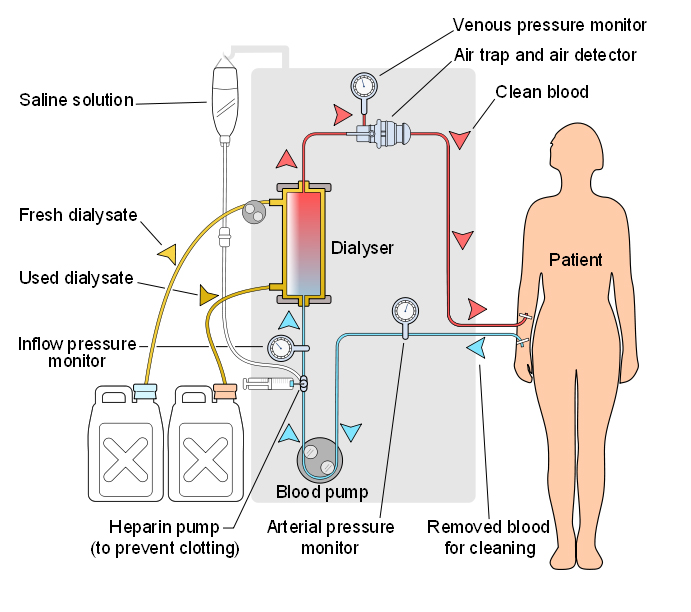![]()
Blog @ SunTech
Advice from the BP Measurement Experts
Blood Pressure Measurement and Dialysis

Dialysis is a medical treatment that performs the job of well-functioning kidneys in ridding the body of waste and helping it to maintain a proper balance of water and minerals. In hemodialysis, this is done by pumping a patient's blood through a dialyzer where the blood is cleansed, and the clean blood is returned to the patient.1 For the over 350,000 US 2and 40,000 UK residents3 who have lost their kidneys and/or kidney function and partake in dialysis regularly, the procedure provides for and defines the normalcy of daily life.

With the rising awareness and prevalence of hypertension among the general population, you might think that blood pressure (BP) control is an important issue for hemodialysis patients. However, little research to date has been done on the topic. Regardless, some medical standards committees have issued recommendations. The Renal Association in the UK is one.4
A recent study, published in Kidney International, calls these guidelines into question.5 In an extensive audit of dialysis centers in London, achievement of these recommended BP targets is linked to a higher incidence of intradialytic hypotension, or a sudden drop in BP during dialysis, one of the most common complications of treatment. With hypotensive episodes presenting in 7% of sessions to 15% of patients, BP monitoring during dialysis shows important value in this frequently-performed procedure. Furthermore, the authors highlight the relationship between BP control during dialysis and in daily life stating that "(i)t is important that clinical recommendations and/or targets are based on sound evidence and that if substantive proof is lacking, then potential adverse events are fully recognized."
Given the lack of research in this area, its conclusion is not, in and of itself, groundbreaking. However, it does highlight the need for clinicians and industry to collaborate on how this "sound evidence" can be discovered in order to improve the recommendations that clinicians give and that define the standards of normalcy that each of us live.
1File:Hemodialysis-en.svg. Wikipedia. 17 Jan 2008. Web. 2 Dec 2009.
2"Kidney and Urologic Diseases Statistics for the United States." National Kidney and Urologic Diseases Information Clearinghouse. NIH. Feb 2009. Web. 2 Dec 2009.
3"Nephrology in the UK." The Renal Association. 9 Nov 2007. Web. 2 Dec 2009.
4"Treatment of adults and children with renal failure." The Renal Association. Aug 2002. Web. 2 Dec 2009.
5Davenport A, Cox C, Thuraisingham R on behalf of the Pan Thames Renal Audit Group. Achieving blood pressure targets during dialysis improves control but increases intradialytic hypotension. Kidney International. (2008)73: 759-764. Web. 2 Dec 2009.
6 Elsharkawy MM, Youssef AM, Zayoon MY. Intradialytic changes of serum magnesium and their relation to hypotensive episodes in hemodialysis patients on different dialysate. Hemodialysis International (2006) 10:S16-S23.
Interested in getting more SunTech news, product info, as well as
tips, tricks, and insights from BP experts?
Sign up to get fresh content delivered direct to your inbox.



